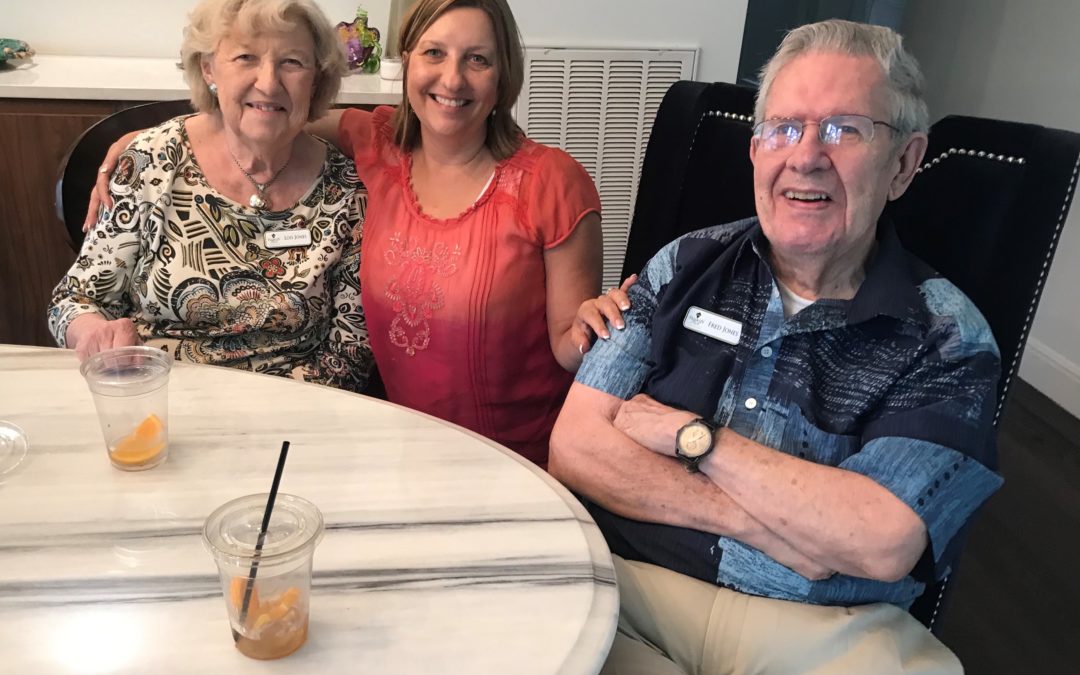Alzheimer disease touches us all
While more than 5 million Americans have been diagnosed with various stages of Alzheimer’s, whether early-onset or advanced, projections are that millions more will be affected as the baby boomer generation ages.
This most common of neurodegenerative diseases is the sixth leading cause of death in the United States. No cure is currently available for a disease that inflicts a huge emotional toll on patients, families and the health care system. Although Alzheimer’s strikes one in six Americans in their 60s — and one of every two in their 80s — fundamental parts of the disease are still unknown and in need of new avenues of research, says George Perry, Ph.D., dean of the College of Sciences at the University of Texas at San Antonio. An internationally recognized expert on the disease, Perry refers to the complex, debilitating disorder that produces profound changes in the brain and is characterized by the loss of cognitive function as “the disease of our time.” Great strides have been made over the past 30 years in understanding how the illness can rob otherwise healthy individuals of their mind and memory, he says. But there is still much work to do. That work is being done right here in San Antonio by Perry — who was recently named the world’s leading expert, demonstrating the greatest expertise and knowledge in the field of Alzheimer disease research, by expertscape.com.
Having spent decades studying Alzheimer’s, Perry hopes to add to the body of knowledge after being named to the newly created Semmes Foundation Endowed Chair in Neurobiology. The $1 million chair was made possible by a Semmes Foundation gift of $500,000, matched by the H-E-B Faculty Research Excellence Fund.
Such luminaries as Winston Churchill, Ralph Waldo Emerson, Henry Ford, Norman Rockwell, Rita Hayward and James Doohan, best known as Scotty on television’s Star Trek, have fallen victim to the illness, for which there is no known cure. More recently, Pat Summitt, the University of Tennessee’s legendary women’s basketball coach who chalked up the most wins in any sport in collegiate history, stepped down after being diagnosed. As recently as last year, more than 1,000 clinical trials were launched to evaluate treatments, but it is not yet known if any of them are effective. Current treatment focuses on the disease’s symptoms, but nothing has yet been found that reverses its progression, which can sometimes be rapid. A common symptom, dementia, causes a person to lose his or her ability to think, recall and reason to such a severe extent that it interferes with daily function. While it was once thought to be typically age-related, studies have shown that Alzheimer’s is not a normal part of the aging process. The theory is that over time, organisms age from the damage done by free radicals, molecules with unpaired electrons in their shells, which leads to DNA and protein damage thought to speed the aging process. Cells damaged by free radicals have been associated not only with Alzheimer’s but with other illnesses such as diabetes.
Perry focuses his research on the brain cells’ response to free radicals and the damage they cause. He hopes this research will provide an unprecedented opportunity for worldwide collaboration as well as stimulating and expanding research into the debilitating affliction. He also is furthering the coordination of research efforts at UTSA into more than 20 nervous system disorders, some of which are commonly associated with the dementia brought on by Alzheimer’s.
Perry, the editor-in-chief of the Journal of Alzheimer’s Disease, has published more than 900 studies on various aspects of the disease. “To have such an authority in our midst will provide a place where other experts in that and other areas will want to come and collaborate,” says UTSA Provost John Frederick.
Early-onset Alzheimer’s, the less common form of the disease, can present symptoms early, but the person affected tends to worsen more rapidly. The most common form is late-onset, occurring in people in their mid-60s. Studies have shown that once a person reaches age 65, the risk for getting Alzheimer’s doubles, and the risk factor continues doubling every five years after that. “The risk just doesn’t stop, it increases as the person gets older, so that by the time people reach age 85, one of two people will have been diagnosed with some form of Alzheimer’s,” says Perry. Some of the most feared components of the disease are the mood changes, depression and confusion triggered by the onset of dementia, which impacts just about every aspect of the affected person’s life.
Over the long term, Perry suspects that Alzheimer’s will have a higher impact in Third World countries, especially in Latin America, because those nations have significantly higher birth rates than European and Far Eastern nations. As people in those developing countries approach their older years, the incidence of Alzheimer’s diagnoses is most likely to increase and put high demands on the health care system, Perry points out. “The greater the number of people who live longer, the greater the problem of dealing with Alzheimer’s patients and the greater the impact will be on the society that has to deal with a larger population that is aging and is most susceptible to being diagnosed with it,” he says. He notes that one facet of the disease that carries particular implications for South Texans — and which he hopes to explore further — relates to its apparent connection to other illnesses like Type 2 diabetes. “There appears to be little doubt that the diet and lifestyle habits of Hispanics make them more susceptible to Type 2 diabetes,” Perry says.
He cites study results that noted that Hispanics over age 85 were diagnosed with Alzheimer’s at a rate of 60 percent, in contrast to the 30-percent rate for Anglos. Other studies indicate that African Americans are also diagnosed at higher rates than Anglos. Nancy Rheams, support assistant with the Alzheimer’s Association San Antonio & South Texas Chapter, says its region of 44 counties sees a high prevalence of Type 2 diabetes among its large Hispanic population. Because of that, she thinks Perry’s research will have significant implications for her chapter. “Whatever the kind of research Dr. Perry might be able to launch, to find answers to common problems of Alzheimer’s could really make a difference,” Rheams notes. “Locally, that kind of research could have a potentially huge impact for us.”
In the past 35 years, both the prevalence and awareness of Alzheimer’s have increased. Today, more than 5 million Americans are suffering from the disease, and by 2050 that number is expected to rise to 16 million. According to the Alzheimer’s Association, the direct costs of caring for those with the disease will total an estimated $203 billion in 2013. The emotional cost to those with the disease and their loved ones is inestimable.
Signs to look for
• Loss of memory that interferes with daily activities
Example: Asking for the same information over and over
• Problems completing routine tasks
Example: Trouble driving to a familiar location
• Confusion with time or place
Example: Losing track of dates, seasons, and the passage of time
• Withdrawal from work or social activities
Example: Increasingly isolated behavior due to confusion and depression
• Decline in judgment
Example: Erratic spending
• Personality and mood changes
Example: Fear and anxiety, particularly when out of normal routine
What to do
If you notice any of these signs in yourself or a loved one, please schedule an appointment with your physician for an assessment. While there is no single test for Alzheimer’s disease, a skilled doctor can determine a diagnosis with 90-percent accuracy through a careful medical evaluation, including detailed medical history, physical and psychiatric examinations and laboratory and imaging work to rule out other diseases.
Living with Alzheimer’s
Treatment: After your diagnosis, your doctor may refer you to a specialist to develop a treatment plan. There are currently five FDA-approved prescription medications for Alzheimer’s.
Resources: The San Antonio & South Texas Chapter of the Alzheimer’s Association (www.alz.org/sanantonio) offers practical and emotional support for patients and caregivers.
Plan for your future: Putting legal, financial and end-of-life plans in order allows you to participate in making decisions that will help family and friends fulfill your wishes.
Prevention
Recent studies have shown that diet and exercise play a role in preventing diseases such as hypertension, diabetes, heart disease and Alzheimer’s. One important lifestyle choice is to maintain a healthy weight and engage in regular physical activity. There is evidence pointing to the benefits of foods rich in antioxidants, such as vitamins E and C and beta carotene, found in many fruits, legumes and vegetables.
While currently there is no cure for Alzheimer’s, recognizing when a loved one needs help is important in potentially slowing the progress of the disease and maintaining a higher quality of life for you and your family.









0 Comments